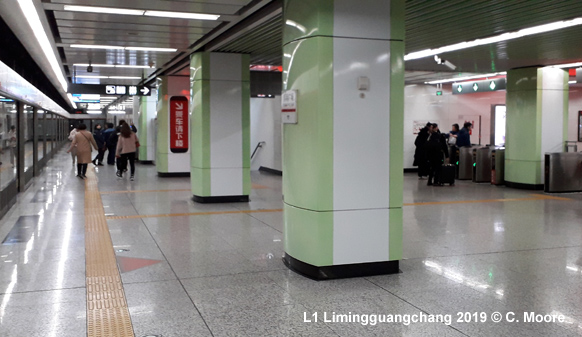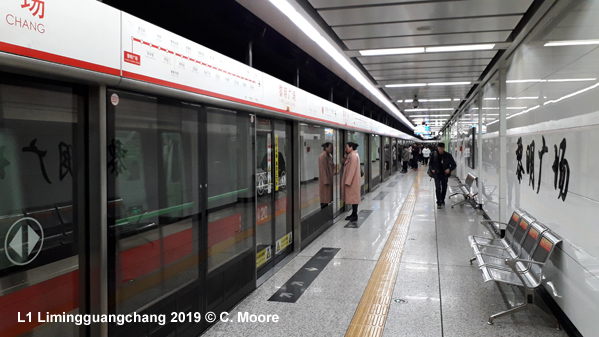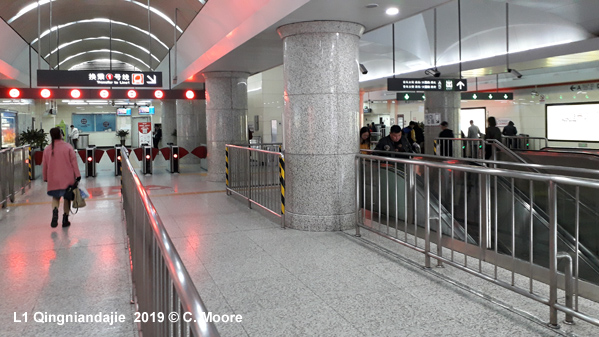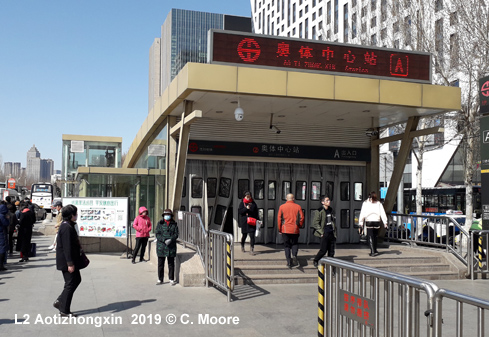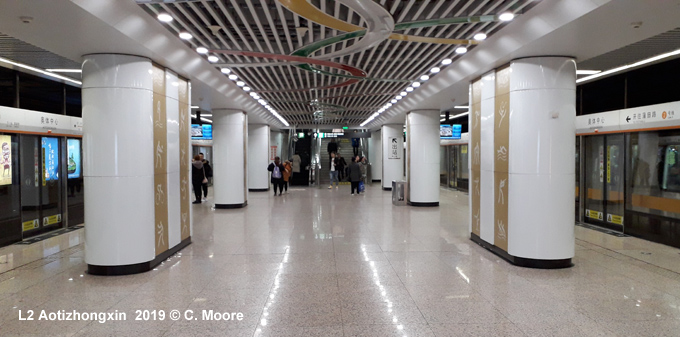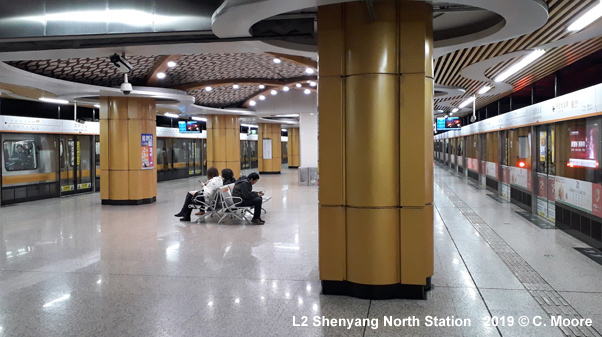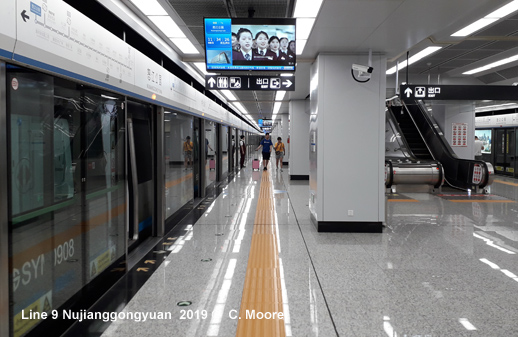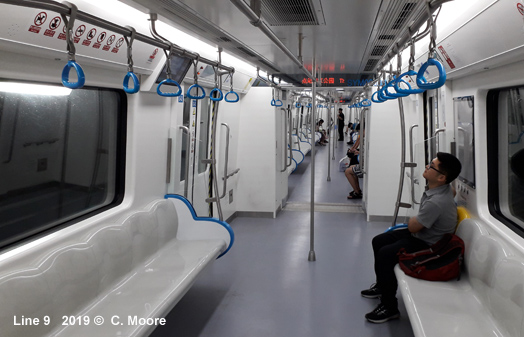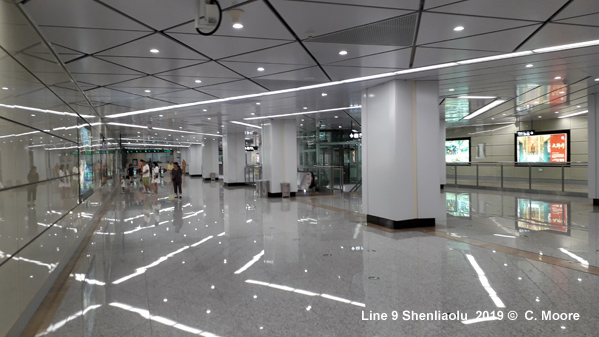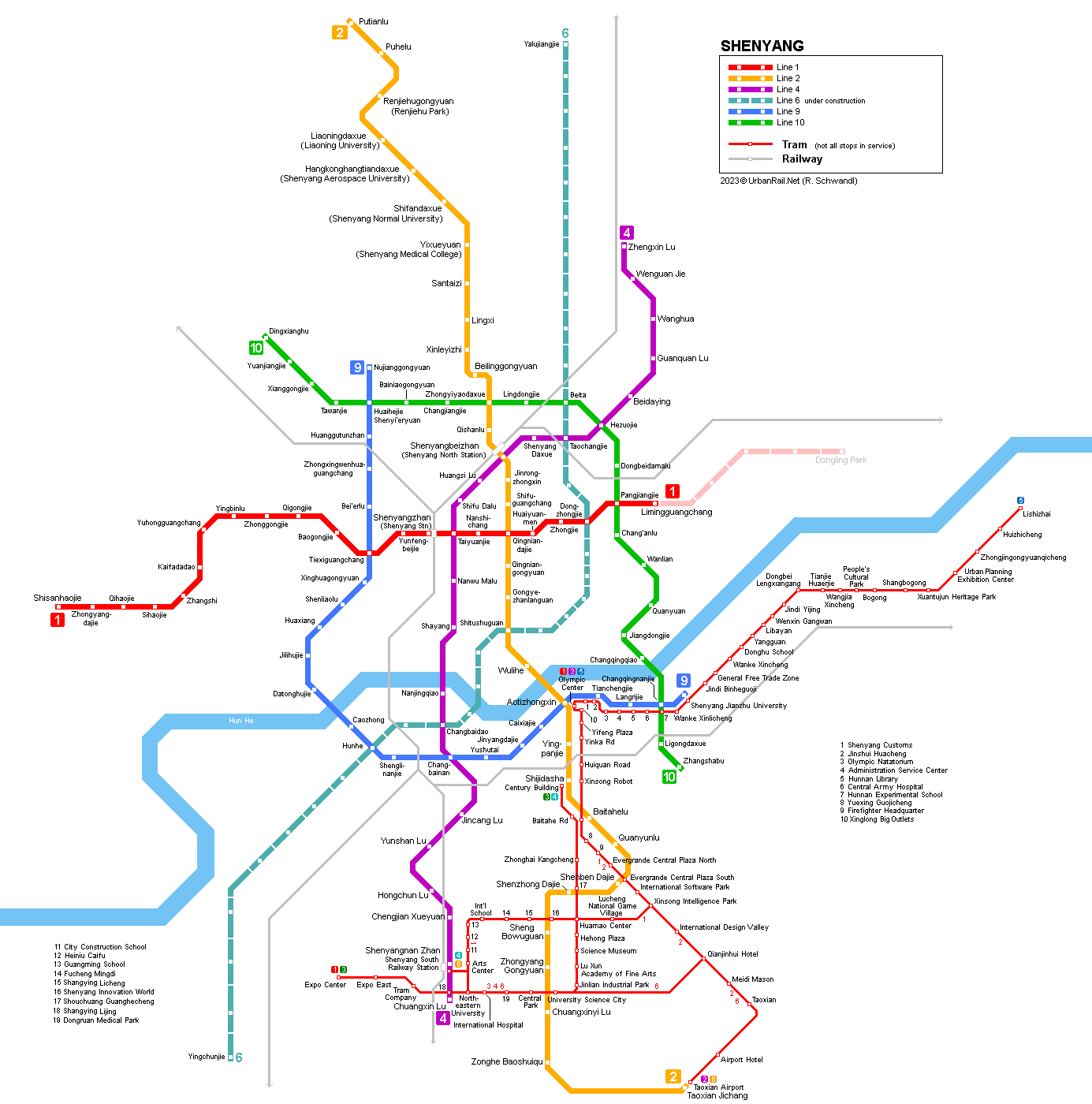
| METRO | |
|
The city of Shenyang (also known as Mukden, Shengjing or Fengtian; approx. 5 million inh.) lies some 500 km northeast of Beijing and is the capital of Liaoning province in Northeast China.
|
|
| Line 1 | |
|
Phase 1 (from west to east) 27.8 km, 22 stations (construction began in late 2005): Shisanhaojie, Zhongyangdajie, Qihaojie, Sihaojie, Zhangshi, Kaifadadao, Yuhongguangchang, Yingbinlu, Zhonggongjie, Qigongjie, Baogongjie, Tiexiguangchang, Yunfengbeijie, Shenyangzhan, Taiyuanjie, Nanshichang, Qingniandajie, Huaiyuanmen, Zhongjie, Dongzhongjie, Bangjiangjie, Limingguangchang Line 1 links Zhangshi in Shenyang economic and technological development zone in the west to the Liming Cultural Museum in the east. 27 Sept
2010: Shisanhaojie - Limingguangchang (22 stations) |
|
|
|
|
| Line 2 | |
|
46.7 km, 33 stations Construction of this north-south line started in late 2006: 09 Jan
2012: Line 2 - Santaizi - Quanyunlu (21.8 km) |
|
|
|
|
| Line 3 | |
|
30 Dec 2024: Lida Nan Liguan (23 km)
|
|
| Line 4 | |
|
34 km, 23 stations, north-south line 29 Sept 2023: Zhengxin Lu Chuangxin Lu
|
|
| Line 9 | |
|
29 km, 23 stations 23 May
2019: Nujianggongyuan - Shenyang Jianzhudaxu University
(29 km) |
|
|
|
|
| Line 10 | |
|
27.2 km, 21 stations 29 Apr 2020: Dingxianghu Zhangshabu (27.2 km)
|
|
|
TRAM |
|
|
In August 2013, Shenyang opened the first stage of a 60 km tram network with four lines and some catenary-free sections, all on the south bank of the Hunhe River, to be operated for the first 3 years by RATP Dev together with a local company. The 30 low-floor trams are manufactured by Voith, together with the Chinese manufacturer Changchun Railway Vehicles Company. Hunnan Modern Trams 15
Aug 2013: 29
June 2016: Line
3 Century Building - Northeastern University (11.3 km)
|
|
| Photos | |
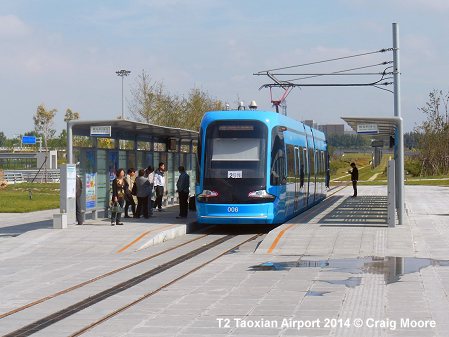
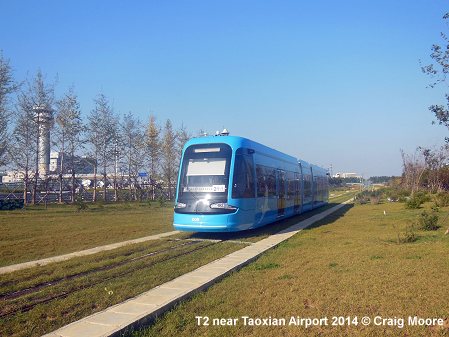
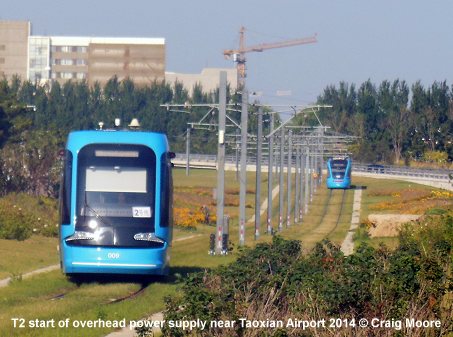
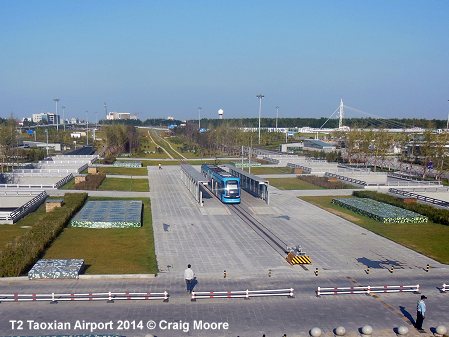
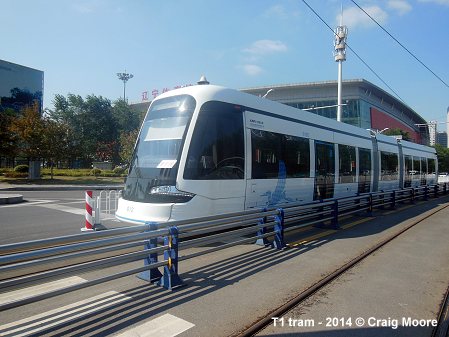
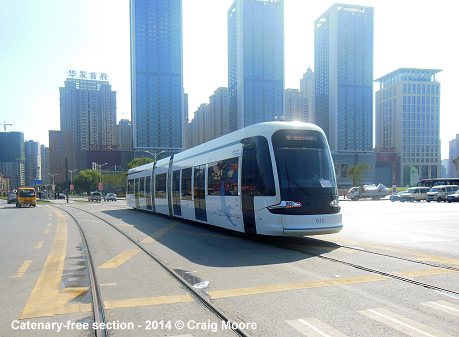
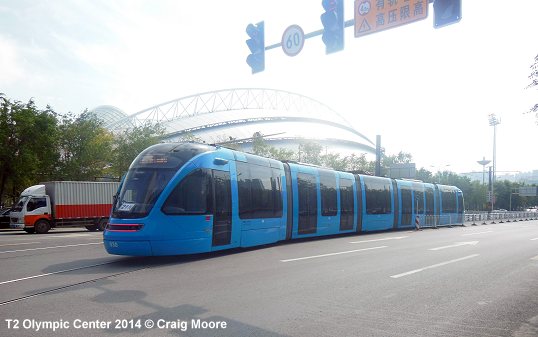
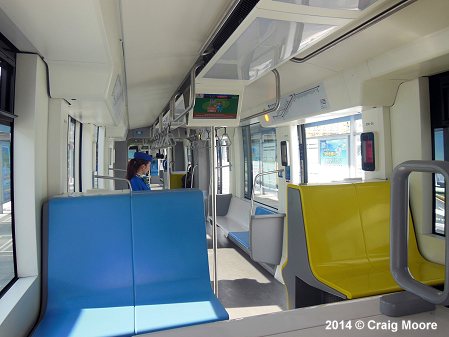
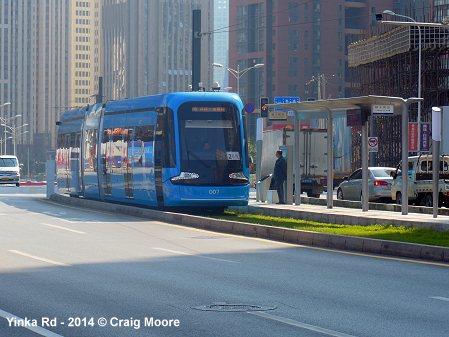
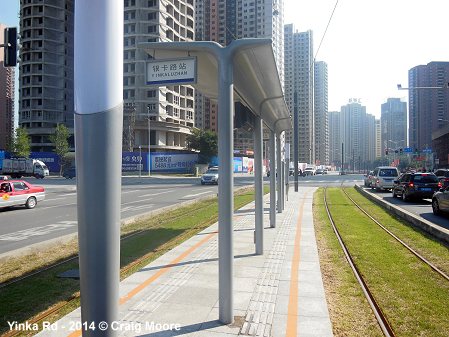
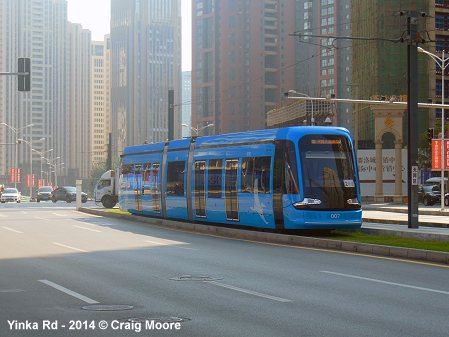

|
|
| Links | |
|
Shenyang Metro at Wikipedia
|
|
|
Craig Moore reports from Shenyang in March 2019: Shenyang is the largest city in northeast China and the birthplace of China s final feudal dynasty (Qing 1644 to 1911). In addition to being home to several important cultural sites, this developing city is served by a two-line metro system and a four-line tram network. Metro Stations entrances are bold in the cityscape, some with a unique electronic board above the main entrance. The entrance is combined with a totem which has a lovely logo (similar to a Celtic Cross) which symbolises the S and the North South/East West alignments very cleverly this is the one redeeming feature of the metro. The ticket halls are standard, with ticket machines, security, ticket gates and stairs/escalators to platforms. In quite concealed areas there are back-lit schematic system maps which are quite skeletal and the recent northern expansion to Line 2 has been squeezed in without any attempt to balance the station gaps etc. a very poor example. Shenyang also has no hard copy information. Tickets are in the form of plastic cards that are scanned on entry and placed in slots on exit, and fares are distance based at 2 to 8 Yuan. This is a simple, fully underground, cross-shaped system of 58.9km. Directional signage is clear with line and location information on pillars and the three-quarter platform screens. Most stations have minimal design features, with simple beige tiling, dim lighting and a small information board/ schematic located at the ends of platform. There are some exceptions to this, and occasional stations offer different ceiling designs (e.g. Bei Zhan). Most stations have island platforms although side platforms do exist at terminals and the interchange station (Line 2 platforms). The interchange is very easy to negotiate with floor and wall stickers identifying the path you should take to reach the alternate line. Line 2 is above Line 1 and a short walk/small set of stairs between lines is negotiated in 90 seconds. Services operate from 0530-2300 and have 6min base headways. Trains are of 5 car CNR stock with side seating (colour-coded to the line (red or pale orange)) and there is above door route indicators, end of carriage electronic station indicators and audio announcements in Chinese and English, but there is no schematic map on the trains. Shenyang is reportedly the slowest Metro in China and it does seem it. Line speeds are not impressive and dwell times are ridiculously long. Line 1 takes 51mins to travel its 27.1km, whilst the 31.8km Line 2 has a one hour journey time. Tram In the centre the lines have street running but most of the network is segregated in peripheral areas (mostly in the median of main roads) with occasional conflicts. Halts are unequally spaced and on longer legs the tram reaches up to 60kph although for the most part it crawls along this is far from a smooth, rapid journey. Given this, and the poor headways, the system does not have a buzzy feel. There isn t the constant rattling of trams at all, they just appear occasionally. Olympic Centre (renamed Outlet Mall ) is the nearest halt to the Metro but there is no signage and in fact, it is a 6min walk to the bus station and Aotizhongxin Metro Station entrance. In summary, both the metro and the tram seem to replicate each other in that they appear quite languid and without style or character. There is also no physical integration between the two systems and, for the Metrophile, Shenyang is sadly not the best example of urban rail provision in China. |
|
| Photos | |
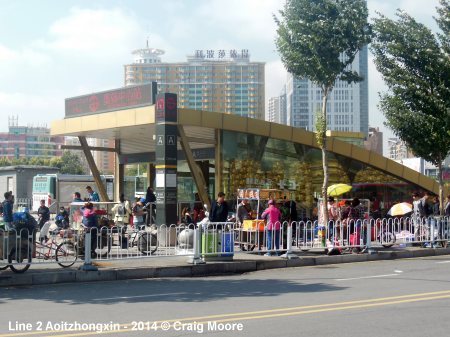
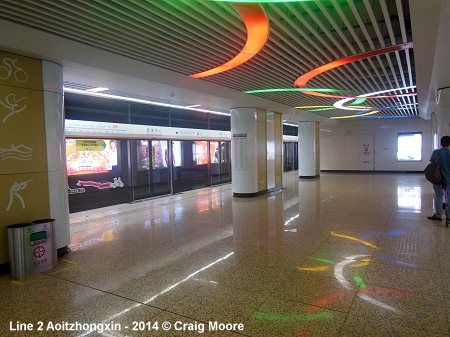
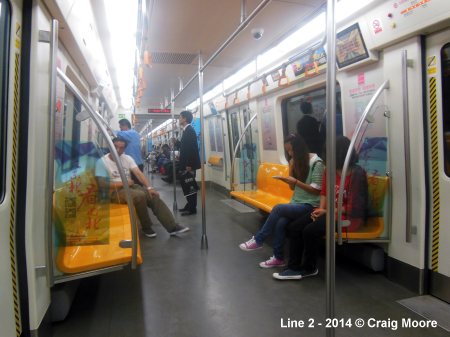
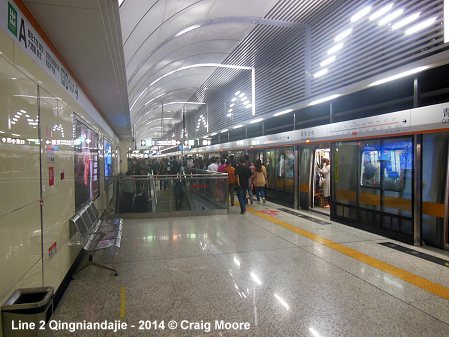
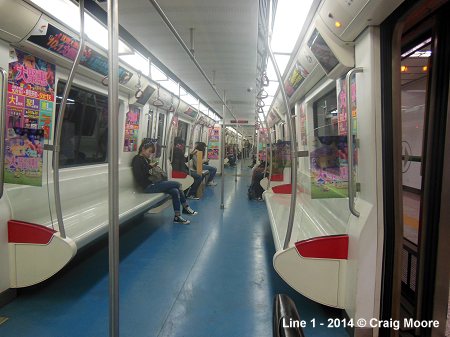
|
2006 © Robert Schwandl (UrbanRail.Net)
